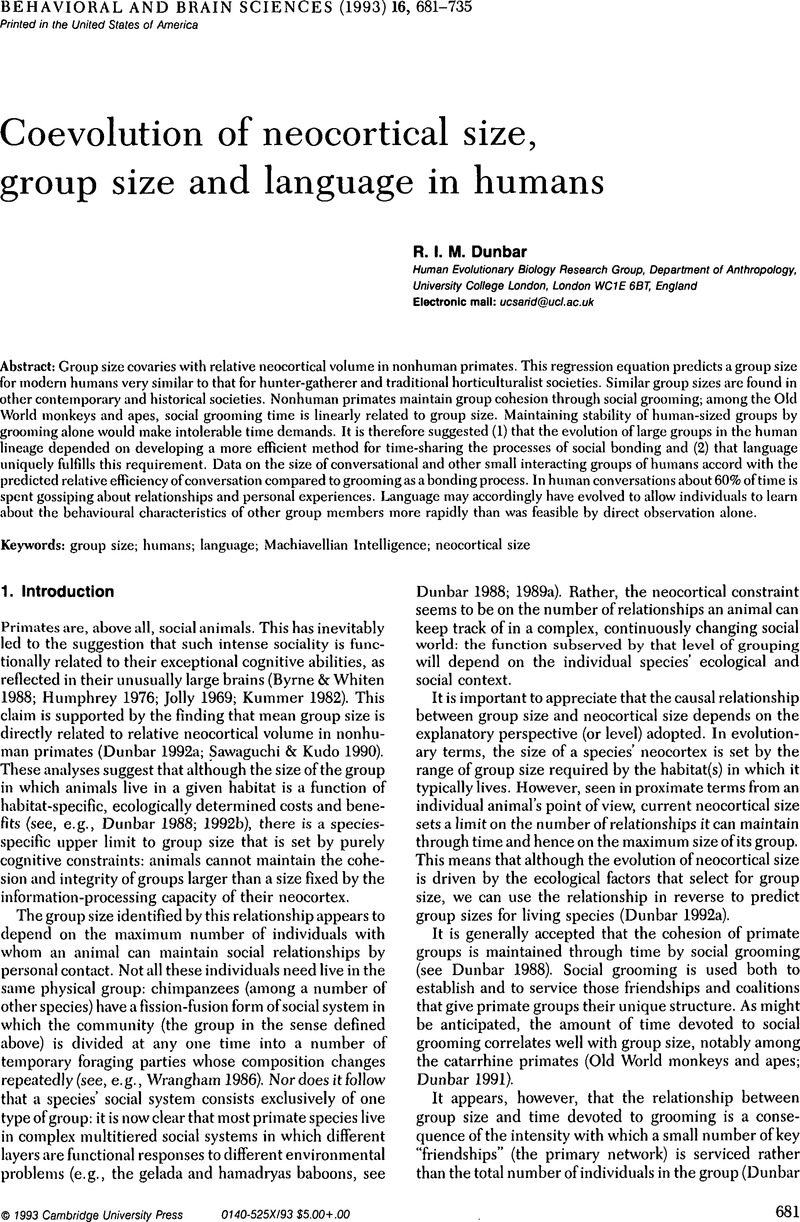Crossref Citations
This article has been cited by the following publications. This list is generated based on data provided by Crossref.
Buchheim, Regine
2001.
Europäische Aktiengesellschaft und grenzüberschreitende Konzernverschmelzung.
p.
101.
Pellis, Sergio M
and
Iwaniuk, Andrew N
2002.
Brain system size and adult–adult play in primates: a comparative analysis of the roles of the non-visual neocortex and the amygdala.
Behavioural Brain Research,
Vol. 134,
Issue. 1-2,
p.
31.
Reader, Simon M.
2003.
The Biology of Traditions.
p.
56.
Lefebvre, L.
Reader, S.M.
and
Boire, D.
2007.
Evolution of Nervous Systems.
p.
121.
Folgerø, Per Olav
Johansson, Christer
and
Stokkedal, Linn Heidi
2021.
The Superior Visual Perception Hypothesis: Neuroaesthetics of Cave Art.
Behavioral Sciences,
Vol. 11,
Issue. 6,
p.
81.
Számadó, Szabolcs
2021.
Pre-hunt charade as the cradle of human musicality.
Behavioral and Brain Sciences,
Vol. 44,
Issue. ,


